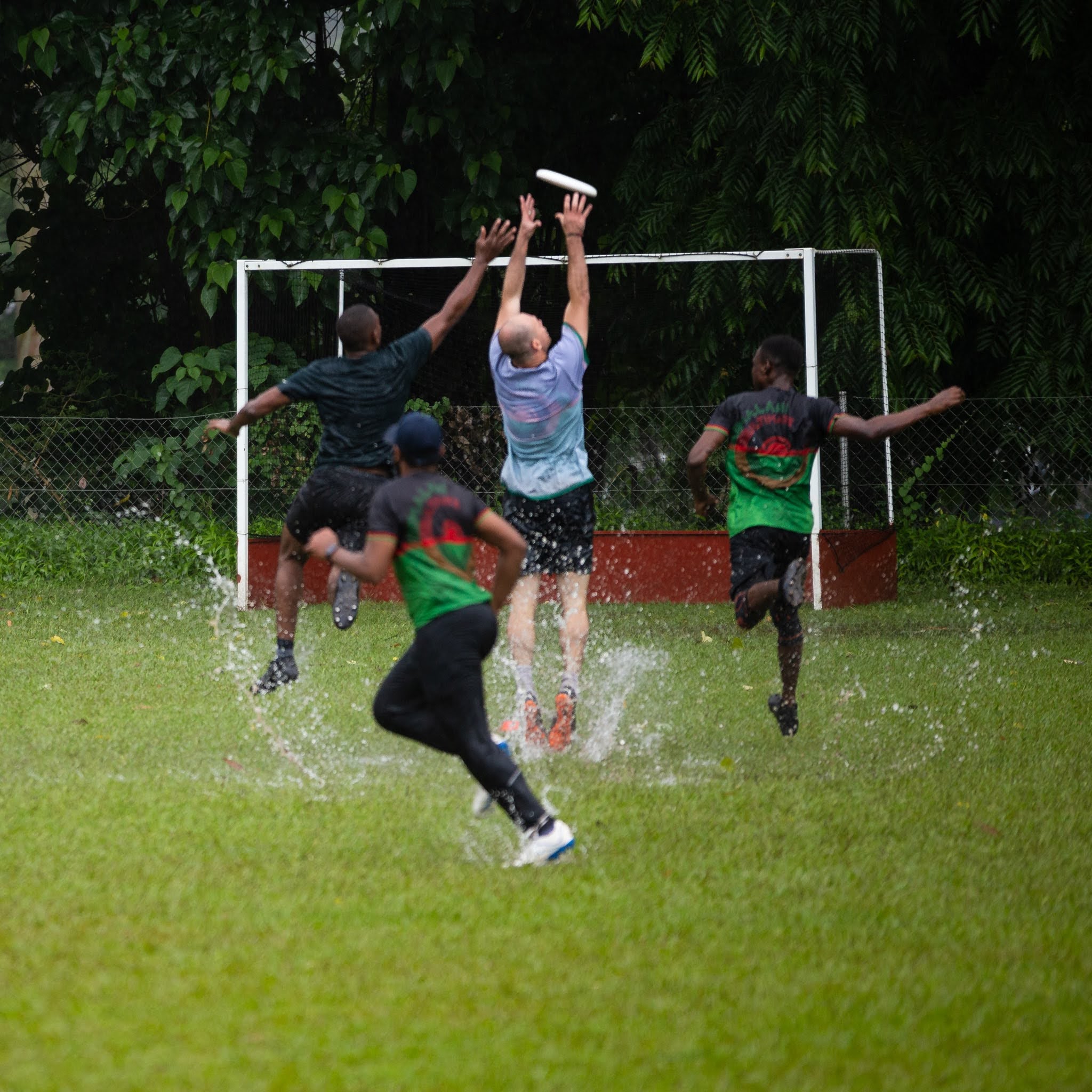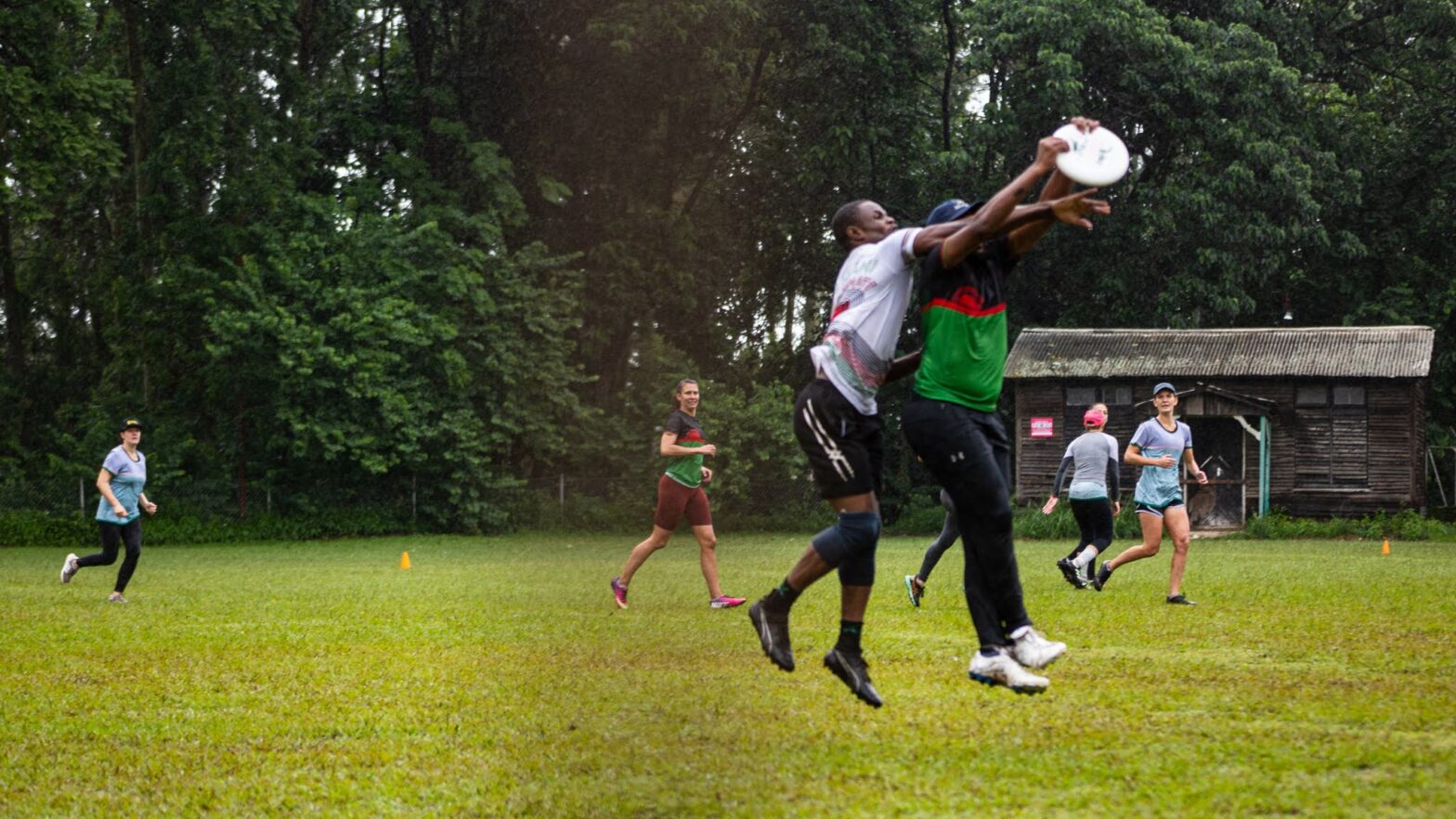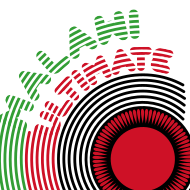In the last two weeks in Blantyre we’ve had some interesting discussions about the rules on physical contact. These arose from a situation where two players clearly collided but no foul was called last week; and this week where players agreed that contact occurred but did not agree on whether it was a foul.
A non-contact sport?
For those of us coming from sports like basketball or football where you can’t deliberately hit or trip a player, but most unintentional contact is allowed, it’s difficult to get into the mindset of calling fouls for contact that may be unintentional, but does affect the play.
However, in ultimate we should. Ultimate calls itself a “non-contact sport” (it’s in rule 1.1.), and this is defined further in rule 12.6:
All players must attempt to avoid contact with other players, and there is no situation where a player may justify initiating contact. This includes avoiding initiating contact with a stationary opponent, or an opponent’s expected position based on their established speed and direction. “Making a play for the disc” is not a valid excuse for initiating contact with other players.
https://rules.wfdf.sport/rules/2021/85-12-receivers-and-positioning
Which seems pretty clear, but…
There is a recognition that in a sport with 14 players running around, some contact will occur and the rules try to allow for ‘minor contact’. We see this in rule 17.2, about receiving fouls:
17.2.1. A Receiving Foul occurs when a player initiates non-minor contact with an opponent before, while, or directly after, either player makes a play on the disc.
https://rules.wfdf.sport/rules/2021/90-17-fouls
17.2.1.1. Contact with an opponent’s arms or hands, that occurs after the disc has been caught, or after the opponent can no longer make a play on the disc, is not a sufficient basis for a foul, but should be avoided
What is minor contact?
The rules define ‘minor contact’ as:
Contact that involves minimal physical force and does not alter the movements or position of another player. Contact with an opponent’s extended arms or hands that are about to, or already are, contacting the disc, or contact to the throwers hand during the throwing motion, is not considered to be minor contact.
https://rules.wfdf.sport/definitions/100-minor-contact
Some examples
A contested call
In the case of what happened this week:
- Player O(ffense) and Player D(efence) where both jumping for the disk.
- The disc was dropped.
- They agree that contact occurred.
- The contact was not strong enough that either were knocked out of position.
- Player O felt the contact put them off catching the disc; so called a Foul.
- Player D felt that the contact had occurred after the disc was lost, and therefore didn’t affect the play (minor contact); so Contested the Foul call.
- The disc was returned to the person who threw it – offence retain the disc.
This is the correct resolution for the situation, which was a genuine and honest difference of opinion on when the contact occurred and how it affected play.
Player knocked to the ground
In the situation last week no foul was called – so this is just my perception of what should have happened:
- Player O(ffence) jumped straight up for the disc.
- Player D(efence) also jumped for the disc, but jumped diagonally, across Player O.
- The disc was dropped (or maybe caught by Player D).
- Player O was knocked to the ground.
- Player O should have called a foul, which could have been either a Receiving Foul or Dangerous Play.
- If Player D accepted the call, the disc would go to Player O; if not it would be returned to the thrower – offence retain the disc.

Offsetting fouls
Another way of viewing the example above is that if both Player O and Player D were jumping diagonally, into the same space, and the contact was ‘non-minor’, then this could be an ‘offsetting foul’. In which case the disc would go back to the thrower.
17.9. Offsetting Fouls:
https://rules.wfdf.sport/rules/2021/90-17-fouls
17.9.1. If accepted fouls are called by offensive and defensive players on the same play, these are offsetting fouls, and the disc must be returned to the last non-disputed thrower.
17.9.2. If there is non-minor contact that is caused by two or more opposing players moving towards a single point simultaneously, this must be treated as offsetting fouls.


